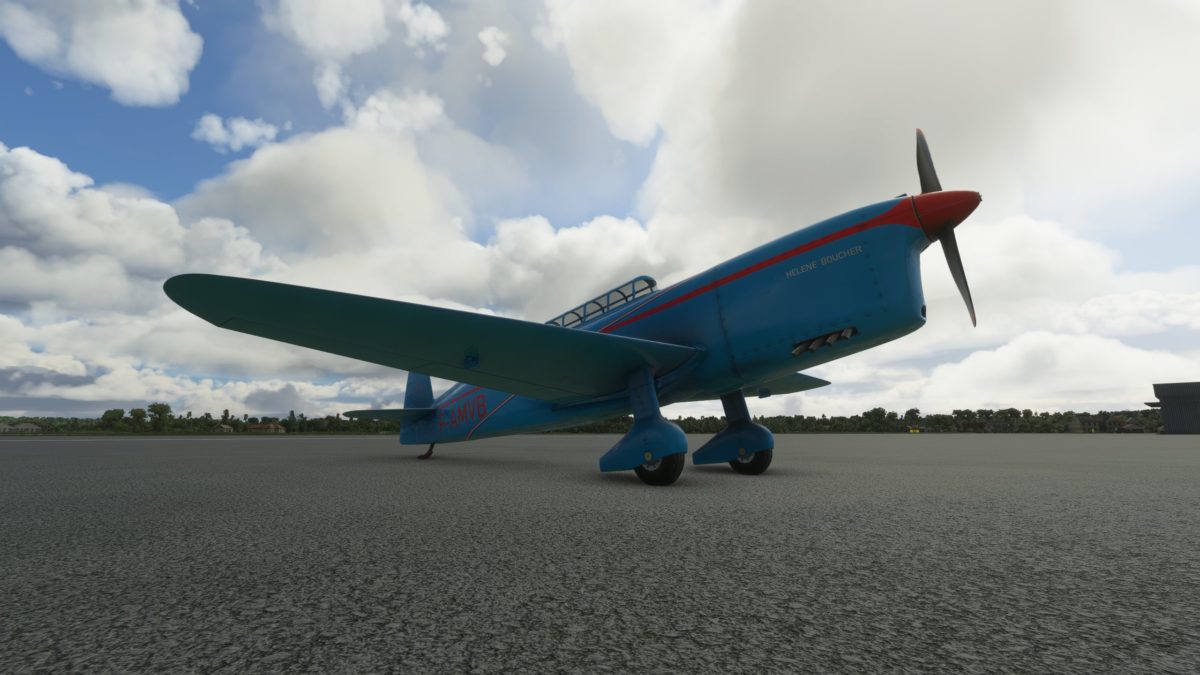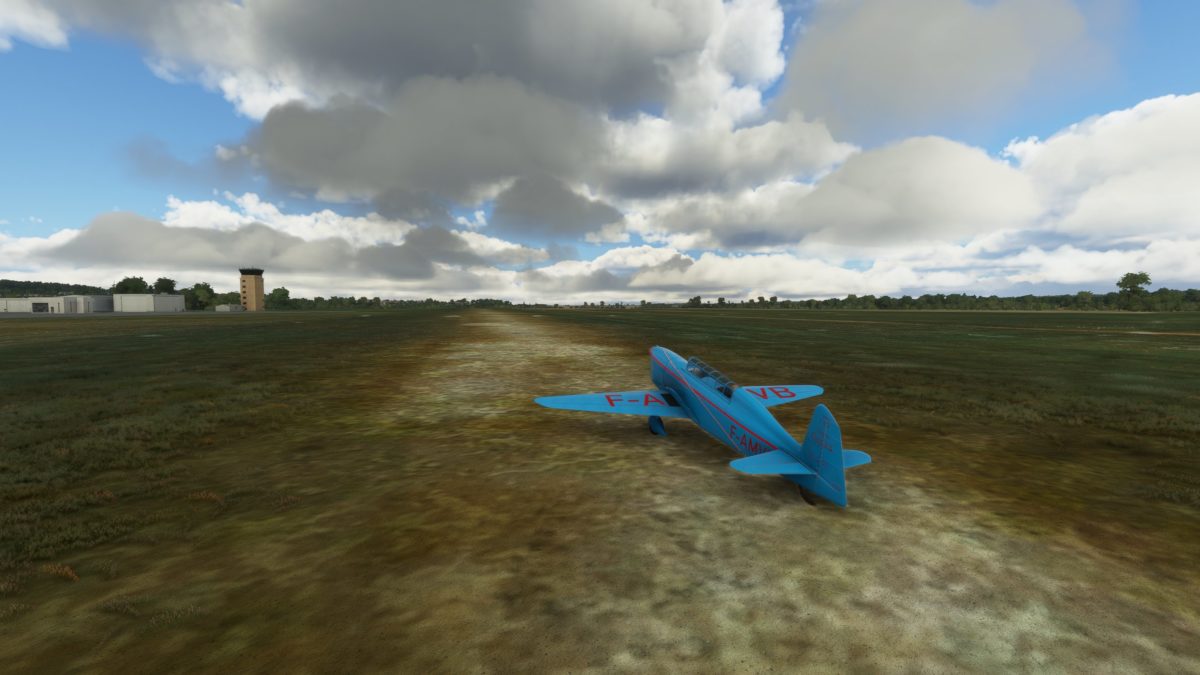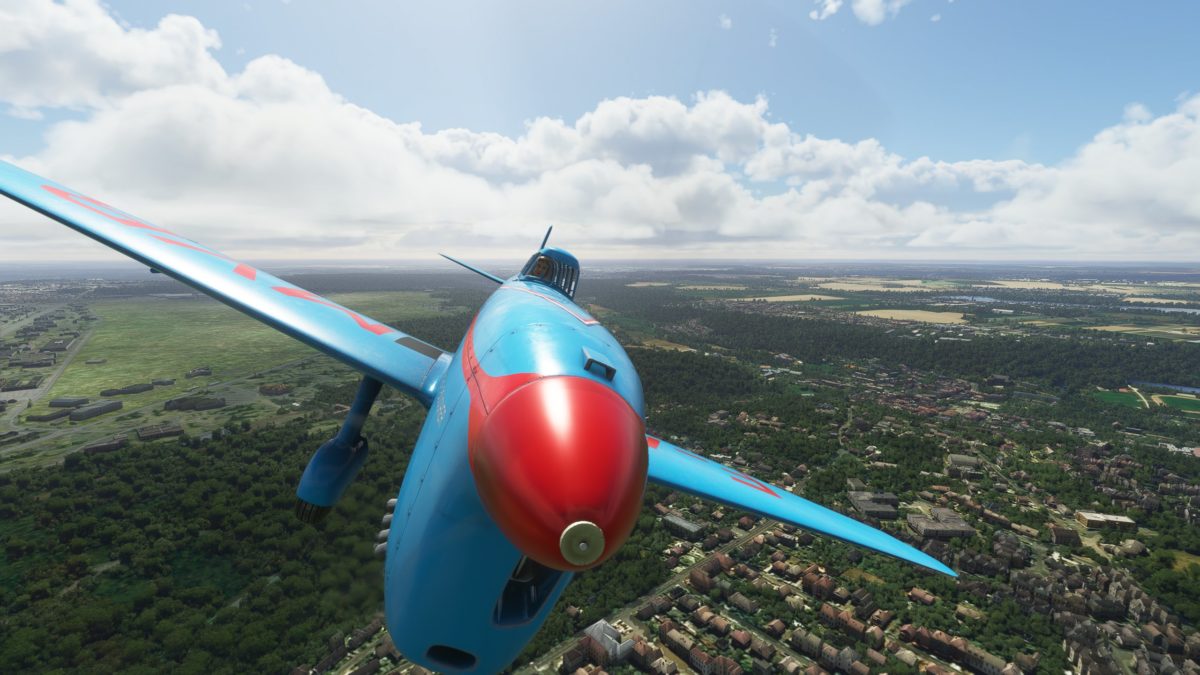January 17, 2023
Today in MSFS, I’m at the Aerodrome de Saint-Cyr-l’École in Versailles to tell the story of the famous French aviatrix Hélène Boucher and her airplane, the Caudron C.430 Rafale.

Boucher is France’s version of Amelia Earhart – equally iconic and equally tragic in the French imagination.

Charles Lindbergh’s solo crossing of the Atlantic, from New York to Paris, in 1927 set off an aviation craze around the world, but particularly in the US and France.

One of those inspired was 22-year-old Hélène Boucher, the Paris-born daughter of an architect. She took flying lessons and earned her private pilot license in 1930.

Boucher soon got a commercial transport license and taught herself aerobatics, and began to participate in air shows and races.

As a result, Boucher received the sponsorship of the French automobile and engine company Renault, which had recently purchased the aircraft company Caudron.

The company had been founded before World War I by two brothers, Gaston and René Caudron, and produced thousands of airplanes for the French military during the war.

Renault provided Hélène Boucher with this Caudron C.430 Rafale to fly in competition. Constructed of wood and fabric skin, it was powered by a 4-cylinder, air cooled, inverted inline engine producing 150 horsepower – not much by later standards, but a racer nonetheless.

The Rafale (the name means “a brief, strong, rush of wind”) has two seats. If flown solo, the pilot sits in the back seat.

That means the rear-seated pilot has quite a long view out the front windscreen and nose of the aircraft.

The instruments take some figuring out. The large “anemometer” in the center is the airspeed indicator – though what unit it uses I have no idea (meters?). The altimeter is to right, above the tachometer (speed the propeller is rotating). Left is the compass and vertical speed.

The power controls are typical of the era – stick and rudder, with a throttle and fuel mixture control to the left. The little wheel to the left sets trim. The propeller pitch could be adjusted, but only outside before takeoff.

With the nose so high, and the pilot so low, you have to taxi by snaking from side to side.

Ready for takeoff from the dirt airstrip at Versailles.

It’s quite an odd view hurtling down the runway. Like most taildraggers, it wants to swerve left when the tail rises, but a few kicks to the right rudder keeps it in line.

And we’re flying. The wheels are fixed and don’t raise.

Now the reason I’ve taken off near the Palace of Versailles is cloaked in tragedy …

Because it was near here that on November 30, 1934, Hélène Boucher’s Caudron C.430 – this plane – apparently stalled and crashed into the woods.

She died in the crash, only age 26.

This was a time in aviation when materials (wood and fabric) were flimsy and designs (in pursuit of speed and performance) were new and untested, and many pilots died early deaths from accidents.

But in the short time she lived, Hélène Boucher set a host of flying records and – just as importantly – captured the imagination of the French public.

She set the altitude record for women at 5,900 m (19,357 feet) and set several world speed records for both men and woman at over (the then blistering) 409 km/h (250 mph).

In her advertisements for Renault, she became a national symbol of adventure and daring.

And when she died, Hélène Boucher became the first woman to lie in state at Les Invalides (below), where Napoleon is entombed.

A girls’ high school in Paris is named after her.

Quite a legacy for such a short life.

I’m coming in to land at Le Bourget Airport, in the north of Paris – where Lindbergh landed – and I honestly don’t know what the approach or stall speeds are. I’m just doing it by feel (if you need to pull back too much to stay on glide path, you need more power).

I must not have gotten it too wrong.

I believe there were only two Caudron C.430 Rafales made. Hélène Boucher’s crashed. The other was repainted as hers, and is now on display at the Espace Air Passion museum outside Angers, France.

Thanks for this opportunity to introduce you to an iconic French airplane …

… and (outside of France) an often forgotten pioneer of aviation.

[…] The standing record that Hughes actually had to beat was 314.32 mph, set the previous Christmas Day by a Caudron C.460, similar to the C.430 I flew in another post. […]